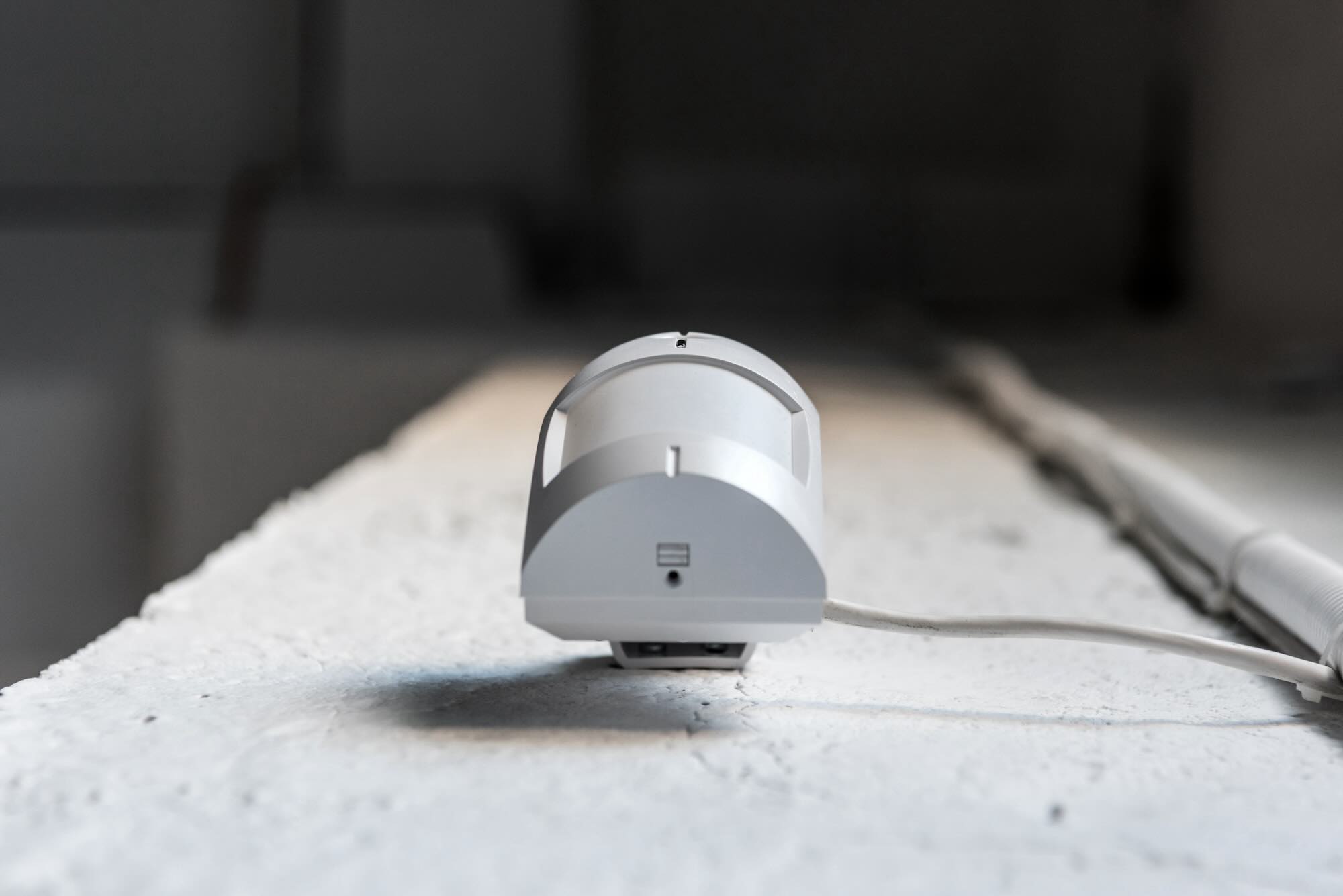Home>Home Security and Surveillance>How To Turn Off Intrusion Detection


Home Security and Surveillance
How To Turn Off Intrusion Detection
Modified: March 7, 2024
Learn how to turn off intrusion detection on your home security and surveillance system to customize your settings and ensure the highest level of privacy and control.
(Many of the links in this article redirect to a specific reviewed product. Your purchase of these products through affiliate links helps to generate commission for Storables.com, at no extra cost. Learn more)
Introduction
Welcome to our comprehensive guide on how to turn off intrusion detection. In today’s digital age, having a secure home is of utmost importance. A robust home security system is essential for protecting your property and ensuring the safety of your loved ones. One vital component of any modern home security system is an intrusion detection system.
An intrusion detection system, or IDS, is designed to monitor and detect any unauthorized activity or intrusion attempts on your home network. It acts as a safeguard, providing an extra layer of security to prevent potential security breaches and ensure the integrity of your data and personal information.
However, there may be scenarios where you might need to temporarily disable the intrusion detection system. This could be when troubleshooting connectivity issues, configuring new devices, or even performing certain activities that could trigger false positives on the IDS. In this article, we will delve into the reasons why you might want to turn off intrusion detection and explore the different methods you can use to do so.
Before we delve into the various methods of disabling intrusion detection, it is important to understand the risks and considerations associated with this action. While temporarily turning off the IDS can allow for easier network configuration or troubleshooting, it also exposes your network to potential security risks. It is crucial to weigh the pros and cons and only disable intrusion detection when absolutely necessary, and for the shortest possible time.
Stay tuned as we explore the different ways you can disable intrusion detection, ranging from accessing the intrusion detection settings on your security device/browser interface, to modifying firewall settings and seeking professional advice if needed. With the right knowledge and precautions, you can ensure a secure home environment while still having the flexibility to disable intrusion detection when required. Let’s dive in!
Key Takeaways:
- Disabling intrusion detection should only be done when necessary, such as troubleshooting connectivity issues or setting up new devices. It’s crucial to re-enable it promptly to protect your network from potential security risks.
- If you’re unsure about disabling intrusion detection, seek professional advice. Balancing convenience and security is key, so always prioritize the safety of your home network and data.
Read more: What Is Wireless Intrusion Detection
Understanding Intrusion Detection Systems
Before diving into the various methods of disabling intrusion detection, it’s important to have a clear understanding of what intrusion detection systems (IDS) are and how they function. An IDS is a crucial component of a comprehensive home security system that is designed to monitor network activity and detect any unauthorized or suspicious behavior.
There are two main types of intrusion detection systems: network-based and host-based. Network-based intrusion detection systems monitor network traffic and analyze it for any signs of malicious activity, such as unauthorized access attempts or abnormal data transfers.
On the other hand, host-based intrusion detection systems focus on individual devices on a network. They analyze the system logs and monitor file integrity to detect any signs of unauthorized access or changes to system files.
Both network-based and host-based intrusion detection systems work by comparing the observed activity against a set of predefined rules or known attack patterns. If any suspicious behavior is detected, the intrusion detection system will generate an alert or take appropriate action, such as blocking the source IP address or notifying the network administrator.
Some intrusion detection systems also incorporate machine learning algorithms to detect new and emerging threats that might not fit into predefined patterns. This enables the IDS to constantly adapt and evolve its detection capabilities to stay ahead of potential attackers.
Intrusion detection systems are essential for protecting your home network from various security threats. They can help prevent unauthorized access to sensitive data, detect malware infections, and provide early warning signs of potential cyber-attacks.
However, there are instances where temporarily disabling the IDS might be necessary. For example, during the setup of new devices on your network, the intrusion detection system may generate false positives, considering the new device as a potential threat. In such situations, it’s crucial to know how to disable intrusion detection temporarily without compromising the overall security of your home network.
In the following sections, we will explore different methods to disable intrusion detection, ensuring that you have the necessary knowledge to handle such scenarios. Remember, the goal is to strike a balance between convenience and security, so it’s important to only disable intrusion detection when absolutely necessary and for the shortest possible time. Let’s move on to the reasons why you might want to turn off intrusion detection.
Why Would You Want to Turn Off Intrusion Detection?
An intrusion detection system (IDS) is an essential component of a home security system, actively monitoring and protecting your network from potential threats. So, why would you ever want to turn off intrusion detection?
While it’s crucial to keep IDS enabled for maximum security, there are a few scenarios where temporarily disabling it might be necessary:
- Troubleshooting connectivity issues: Sometimes, network connectivity issues can arise, preventing devices from communicating with each other. In such cases, disabling intrusion detection temporarily can help identify the root cause and restore normal network functionality.
- Configuring new devices: When adding a new device to your home network, the intrusion detection system may flag it as a potential threat. Disabling the IDS during the initial setup phase can help avoid false positives and ensure a smoother setup process.
- Incompatible software or false positives: In certain cases, certain software applications or services may trigger false positives on the intrusion detection system. This can lead to legitimate actions being blocked or restricted. Temporarily disabling the IDS can allow you to use the specific software or service without interruptions.
- Policy compliance testing: Organizations and individuals may want to conduct policy compliance testing to ensure that their security measures are working effectively. Temporarily turning off intrusion detection can help simulate real-world scenarios and gauge the effectiveness of existing security controls.
- Network diagnostics and monitoring: Professionals conducting network diagnostics or monitoring may need to temporarily disable intrusion detection to capture detailed network traffic or analyze specific packets more thoroughly. This can be useful in troubleshooting network issues or identifying potential security vulnerabilities.
It’s important to note that while these scenarios may warrant temporarily disabling intrusion detection, it should be done with caution. Disabling the IDS exposes your network to potential security risks. Therefore, it’s crucial to follow best practices, minimize the time of disablement, and re-enable the IDS as soon as the specific task requiring its deactivation is completed.
In the next sections, we will explore different methods you can use to disable intrusion detection, ensuring you have the necessary knowledge to navigate these situations securely. Remember, the overall goal is to maintain a balance between convenience and security, so only disable intrusion detection when absolutely necessary and for the shortest possible time. Let’s move on to the risks and considerations of disabling intrusion detection.
Risks and Considerations
While there may be valid reasons for temporarily disabling intrusion detection, it’s important to understand the risks and considerations associated with this action. Disabling intrusion detection exposes your network to potential security vulnerabilities. Here are some key risks and considerations to keep in mind:
- Increased vulnerability to attacks: The primary purpose of intrusion detection is to monitor and detect any unauthorized or suspicious activity on your network. By turning off intrusion detection, you are effectively disabling this crucial layer of security, making your network more vulnerable to attacks.
- Prolonged exposure to threats: Cyber threats are continuously evolving, with new attack vectors emerging regularly. If you disable intrusion detection for an extended period, you are essentially leaving your network exposed to potential threats without any defense mechanisms in place.
- Missed detection of genuine threats: IDS systems are designed to detect and respond to potential threats in real-time. By disabling intrusion detection, you may miss the detection of genuine threats, allowing them to go undetected and potentially cause significant harm to your network and data.
- Increased false positives: Intrusion detection systems can sometimes generate false positives, flagging legitimate actions as potentially malicious. While this can be frustrating, it’s important to carefully evaluate whether disabling the IDS is the best solution. It’s often preferable to fine-tune the IDS settings or consult with a professional to reduce false positives rather than completely disabling intrusion detection.
- Legal and compliance implications: Depending on your jurisdiction or industry regulations, there may be legal and compliance requirements for maintaining active intrusion detection. Disabling the IDS without proper authorization or adherence to regulations can lead to legal consequences or non-compliance issues.
Considering these risks and considerations, it’s crucial to weigh the pros and cons before disabling intrusion detection. Always prioritize the security of your network and data, and only disable intrusion detection when absolutely necessary and for the shortest possible time.
In the next sections, we will explore various ways to disable intrusion detection. It’s important to follow the instructions carefully and ensure that you understand the potential repercussions. Let’s move on to the different methods you can use to disable intrusion detection as needed.
Ways to Disable Intrusion Detection
When it comes to disabling intrusion detection, there are several methods you can use, depending on your specific setup and requirements. Before proceeding with any of these methods, it’s important to carefully consider the potential risks and implications discussed in the previous section. Here are four common ways to disable intrusion detection:
- Method 1: Accessing the Intrusion Detection Settings
- Method 2: Disabling Intrusion Detection through Security Software
- Method 3: Modifying Firewall Settings
- Method 4: Consulting with a Professional
The first method involves accessing the settings of your intrusion detection system. This method will vary depending on the specific security device and software you have. In general, you will need to log in to the administration interface of your security device or browser and navigate to the intrusion detection settings. From there, you can temporarily disable the intrusion detection functionality. It’s important to note that the steps may differ based on the specific brand and model of your device, so refer to the user manual or online documentation for instructions specific to your setup.
If you are utilizing security software on your devices, such as antivirus or internet security suites, you may be able to disable intrusion detection through the software’s settings. Locate the intrusion detection features within the software’s interface and temporarily turn off the relevant options. Keep in mind that the steps for disabling intrusion detection in security software will vary depending on the software you are using.
Another method to consider is modifying the settings of your firewall. Intrusion detection often works in conjunction with the firewall to provide comprehensive security. Temporarily adjusting the firewall settings can help disable intrusion detection while maintaining a basic level of network protection. This method requires more advanced knowledge and should only be attempted if you are familiar with firewall settings and their potential impact on your network security.
If you are uncertain about disabling intrusion detection on your own, or if you have unique circumstances that require expert advice, it is highly recommended to seek the assistance of a professional. Network security professionals have the expertise to assess your specific situation, understand the risks involved, and provide guidance on the best course of action to temporarily disable intrusion detection without compromising the overall security of your home network.
Remember, it’s crucial to carefully evaluate the need to disable intrusion detection and minimize the duration of disablement. Once the specific task requiring intrusion detection disablement is completed, it is highly recommended to re-enable the IDS promptly to maintain the integrity and security of your network.
In the next section, we will wrap up our guide and provide some concluding remarks. Let’s move on!
To turn off intrusion detection, access the security settings on your device or network and locate the intrusion detection option. Then, simply toggle the setting to “off” or follow the specific instructions provided for your system.
Method 1: Accessing the Intrusion Detection Settings
One common method to disable intrusion detection is by accessing the settings of your intrusion detection system. The steps for accessing these settings may vary depending on the specific security device or software you are using. However, we will provide a general overview of the process to help you get started.
Here is a step-by-step guide to accessing the intrusion detection settings:
- Step 1: Identify your security device or software: Determine the specific brand and model of your security device or software. This information can usually be found on the device itself or in the documentation that came with it.
- Step 2: Connect to the administration interface: To access the intrusion detection settings, you will need to connect to the administration interface of your security device. This is typically done through a web browser by entering the IP address of the device or software in the address bar.
- Step 3: Log in to the administration interface: Once you have accessed the administration interface, you will need to log in using the appropriate credentials. These credentials are often set during the initial setup of the device or software.
- Step 4: Navigate to the intrusion detection settings: Once logged in, navigate to the settings section of the administration interface. Look for options related to intrusion detection, which may be labeled as IDS or similar. The exact location of these settings will vary depending on the device or software you are using.
- Step 5: Temporarily disable intrusion detection: In the intrusion detection settings, you will typically find an option to enable or disable the system. Locate the option to disable intrusion detection and select it. Confirm any prompt or warning messages that may appear, as disabling intrusion detection will temporarily expose your network to potential risks and attacks.
- Step 6: Save and apply the changes: After disabling intrusion detection, make sure to save and apply the changes. This will ensure that the changes take effect and intrusion detection is disabled as desired.
Keep in mind that the specific steps and terminology may vary depending on your security device or software. Refer to the user manual or online documentation provided by the manufacturer for detailed instructions tailored to your specific setup.
Remember, disabling intrusion detection should only be done when absolutely necessary and for the shortest possible time. Once you have completed the task that required intrusion detection disablement, it is highly recommended to re-enable the IDS promptly to secure your network against potential threats.
Continue reading to learn about the other methods available for temporarily disabling intrusion detection.
Method 2: Disabling Intrusion Detection through Security Software
If you are using security software on your devices, such as antivirus or internet security suites, you may be able to disable intrusion detection through the software’s settings. This method allows you to manage intrusion detection at the software level, providing greater flexibility and control.
Here is a step-by-step guide on how to disable intrusion detection through security software:
- Step 1: Identify your security software: Determine the specific brand and version of the security software installed on your device. This information can usually be found in the software’s user interface or in the documentation provided by the manufacturer.
- Step 2: Access the software’s interface: Launch the security software by locating its icon in your system tray or opening it from the Start menu. This will bring up the main interface of the software.
- Step 3: Navigate to the intrusion detection settings: In the software’s interface, look for the section or tab related to intrusion detection, which may be labeled as IDS or similar. This is where you can manage the intrusion detection settings.
- Step 4: Disable intrusion detection: Within the intrusion detection settings, there should be an option to enable or disable the feature. Locate this option and turn off or disable intrusion detection. Depending on the software, you may have the option to disable intrusion detection completely or choose specific components to disable.
- Step 5: Confirm the changes: After disabling intrusion detection, the software may display a confirmation dialog or prompt you to confirm the changes. Read the message carefully and confirm the disablement of intrusion detection when prompted.
- Step 6: Exit the software: Once you have disabled intrusion detection, you can exit the security software. Make sure to save any changes if prompted before closing the software.
It’s important to note that the steps outlined above are general guidelines, and the specific process may vary depending on the security software you are using. Refer to the software’s documentation or help files for detailed instructions tailored to your particular setup.
Remember, disabling intrusion detection should only be done when absolutely necessary and for the shortest possible time. Once you have accomplished the tasks that required intrusion detection disablement, it is highly recommended to re-enable the IDS promptly to protect your network against potential threats.
Continue reading to explore more methods for temporarily disabling intrusion detection.
Method 3: Modifying Firewall Settings
Another method you can use to temporarily disable intrusion detection is by modifying the settings of your firewall. Firewalls play a crucial role in network security by filtering incoming and outgoing network traffic. Adjusting firewall settings can provide a way to disable intrusion detection while maintaining a basic level of network protection.
Here is a step-by-step guide on how to disable intrusion detection by modifying firewall settings:
- Step 1: Identify your firewall: Determine the specific firewall software or hardware device you are using. This information can usually be found in the documentation provided by the manufacturer or in the firewall’s configuration interface.
- Step 2: Access the firewall settings: To modify firewall settings, you will need to access the configuration interface of your firewall. This can typically be done by opening a web browser and entering the IP address of your firewall into the address bar. Alternatively, you may need to use specialized software provided by the firewall manufacturer to access the settings.
- Step 3: Log in to the firewall: Once you have accessed the configuration interface, you will need to log in using the appropriate credentials. These credentials are often set during the initial setup of the firewall or provided by the manufacturer.
- Step 4: Locate the intrusion detection settings: In the firewall settings, look for the section or tab related to intrusion detection or security features. The exact location of these settings will vary depending on your firewall device or software.
- Step 5: Disable intrusion detection: Within the intrusion detection settings, there should be an option to enable or disable the feature. Locate this option and turn off or disable intrusion detection. Depending on the firewall, you may have the option to disable intrusion detection completely or choose specific components to disable.
- Step 6: Save the settings: After disabling intrusion detection, save the changes in the firewall settings. This ensures that the new settings take effect.
- Step 7: Test the changes: To verify that intrusion detection has been successfully disabled, perform a test by attempting to access your network from an external source or running a network scan. Ensure that the firewall is no longer generating alerts or blocking legitimate traffic.
It’s important to note that modifying firewall settings requires a good understanding of network security and firewall configuration. If you are not comfortable or familiar with making these changes, it is advisable to seek assistance from a network security professional or the manufacturer’s support team.
Remember, disabling intrusion detection should only be done when absolutely necessary and for the shortest possible time. Once you have completed the tasks that required intrusion detection disablement, it is highly recommended to re-enable the IDS promptly to maintain the security of your network against potential threats.
Continue reading to explore the final method for temporarily disabling intrusion detection.
Method 4: Consulting with a Professional
If you are uncertain about disabling intrusion detection on your own or if you have unique circumstances that require expert advice, it is highly recommended to consult with a network security professional. Seeking professional assistance can ensure that you make informed decisions and take the necessary precautions to protect your network while temporarily disabling intrusion detection.
Here is a step-by-step guide on how to consult with a professional to disable intrusion detection:
- Step 1: Research and find a reputable professional: Look for network security professionals in your area or specialized firms that offer consultancy services. Check their credentials, experience, and customer reviews to find a reputable professional who can assist you effectively.
- Step 2: Explain your situation and specific requirements: Contact the chosen professional and explain your situation in detail. Clearly communicate why you need to temporarily disable intrusion detection and any specific requirements you have.
- Step 3: Provide necessary information and access: Cooperate with the professional by providing any necessary information about your network setup, security devices, and software. You may need to grant temporary access to the professional for troubleshooting or configuration purposes.
- Step 4: Follow their guidance and recommendations: Listen to the advice and recommendations provided by the professional. They will assess the risks, evaluate the potential impact of disabling intrusion detection, and suggest the best course of action based on their expertise.
- Step 5: Implement their recommendations: If the professional suggests disabling intrusion detection, follow their guidance on how to do so effectively and securely. Ensure that you understand the steps and implications of their recommendations before proceeding.
- Step 6: Re-enable intrusion detection: Once the specific task requiring intrusion detection disablement is completed, promptly re-enable the intrusion detection system. Verify that it is functioning correctly and monitor for any abnormal activity.
- Step 7: Maintain contact for ongoing support: If needed, establish ongoing communication with the professional for any further support or questions related to network security. They can provide guidance on proactive measures to strengthen your network’s security.
Consulting with a professional ensures that you receive personalized advice and guidance tailored to your specific network setup and security requirements. They can help you navigate the complexities of disabling intrusion detection while minimizing the risks involved.
Remember, network security is a critical aspect of protecting your home and personal information. It’s important to prioritize security and only disable intrusion detection when absolutely necessary and for the shortest possible time.
Now that we have explored various methods to disable intrusion detection, let’s wrap up our guide with some concluding remarks.
Read more: How To Implement Svelte Intrusion Detection
Conclusion
Intrusion detection systems (IDS) are an integral part of a comprehensive home security setup. They play a crucial role in monitoring and detecting unauthorized activity on your network, ensuring the safety and integrity of your home and personal information. However, there may be scenarios where it becomes necessary to temporarily disable intrusion detection.
Throughout this guide, we have discussed the reasons why you might want to turn off intrusion detection, including troubleshooting connectivity issues, configuring new devices, dealing with false positives, conducting compliance testing, or performing network diagnostics. We also explored the risks and considerations associated with disabling intrusion detection, highlighting the importance of maintaining network security and minimizing the duration of disablement.
We provided four methods to disable intrusion detection, including accessing the intrusion detection settings, disabling intrusion detection through security software, modifying firewall settings, and consulting with a professional. These methods offer different approaches depending on your specific setup and requirements. However, it’s crucial to follow best practices, consult documentation, and seek professional assistance when needed.
It’s important to reiterate that disabling intrusion detection should only be done when absolutely necessary and for the shortest possible time. Regularly monitor your network, promptly re-enable intrusion detection once the task requiring disablement is completed, and stay vigilant for any signs of malicious activity.
Remember that maintaining the security of your network is an ongoing responsibility. Regularly update your security software and firmware, keep an eye out for security patches, and educate yourself about the latest threats and best practices. Additionally, consider seeking professional advice and support to ensure that your home security setup is robust and continuously monitored.
By balancing convenience and security, you can navigate the occasional need to disable intrusion detection while maintaining a safe and secure home network environment. We hope that this guide has provided you with valuable insights and empowered you to make informed decisions when it comes to managing intrusion detection in your home security system.
Thank you for reading, and stay safe!
Frequently Asked Questions about How To Turn Off Intrusion Detection
Was this page helpful?
At Storables.com, we guarantee accurate and reliable information. Our content, validated by Expert Board Contributors, is crafted following stringent Editorial Policies. We're committed to providing you with well-researched, expert-backed insights for all your informational needs.













